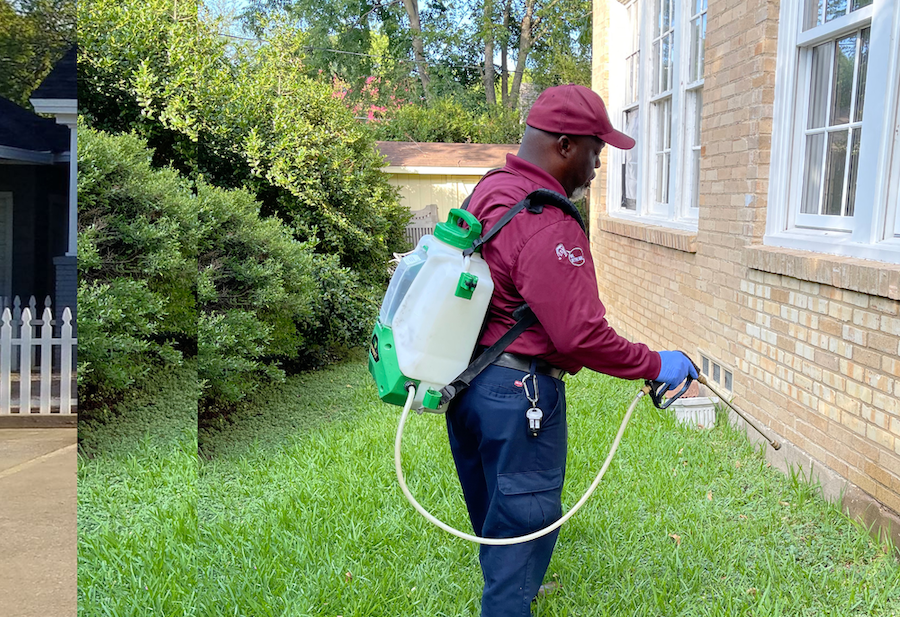Bed Pest Therapy Failure: Comparing Chemical Vs. Non-Chemical Solutions
In the world of parasite control, especially when dealing with the consistent concern of bed bugs, the option in between chemical and non-chemical treatment services can be an essential one. Both techniques offer unique advantages and drawbacks, influencing factors such as effectiveness, security factors to consider, and overall expense. By analyzing the nuanced details of each method, a clearer understanding of which path to go after in attending to a bed bug infestation can be obtained.
Effectiveness of Chemical Therapies
Chemical treatments for bed insect invasions have actually been extensively recognized for their powerful and quick effectiveness in eliminating these bugs. When thinking about the performance of chemical treatments, it is essential to understand that they can provide a complete and quick service to a bed insect trouble. Specialist pest control men often depend on insecticides to target bed insects at various stages of their life process, consisting of eggs, grownups, and nymphs. These chemicals typically work by interfering with the bed bugs' nerves, resulting in paralysis and ultimate fatality.
Additionally, chemical treatments have the benefit of offering recurring impacts, implying that they can proceed to remove bed bugs also after the first application. This recurring activity is especially useful in combating any possible re-infestations. In addition, the fast action of chemical therapies can bring alleviation to people facing serious bed bug invasions, enabling them to gain back control of their space promptly.
Safety Interest In Chemical Solutions
One essential facet that calls for cautious factor to consider when utilizing chemical remedies for bed pest treatment is making certain the safety of owners and the atmosphere. Direct exposure to particular chemicals used in bed insect treatments can lead to respiratory system concerns, skin irritation, or other negative responses, especially in individuals with pre-existing problems or sensitivities.
In addition, the environmental effect of chemical solutions is another considerable factor to consider. Some pesticides used in bed pest therapies may be dangerous to helpful bugs, wild animals, and environments if they leach into the soil or water supply. It is important to use chemical therapies sensibly, complying with safety standards, and thinking about much less harmful alternatives to reduce these threats and make certain the effective and risk-free management of bed bug invasions.
Advantages of Non-Chemical Approaches
Taking into consideration the prospective security issues and environmental influence associated with chemical solutions for bed pest therapy, checking out non-chemical approaches presents an encouraging alternative with numerous unique benefits. Non-chemical treatments are environmentally friendly, as they do not contribute to air or water pollution, making them a lasting option for insect control.
Additionally, non-chemical options can be effective in targeting bed bugs, including hard-to-reach areas where chemical treatments might not pass through. Methods such as heat therapy, vacuuming, vapor cleaning, and cushion encasements offer complete eradication without making use of dangerous chemicals. Furthermore, non-chemical strategies can be much less turbulent, needing marginal prep work and permitting quicker reentry into treated locations. Generally, selecting non-chemical bed bug treatment approaches not only prioritizes safety and security and environmental management however likewise makes sure extensive and reliable bug control.
Limitations of Non-Chemical Treatments

Furthermore, non-chemical therapies typically need numerous applications to accomplish successful obliteration. This can be taxing and may not constantly ensure complete removal of all bed pests and their eggs, specifically in hard-to-reach or hidden locations.
Additionally, the success of non-chemical therapies heavily depends on appropriate implementation and thoroughness, which can be challenging for people without professional experience. Poor application of non-chemical techniques might lead to insufficient removal, leading to consistent invasions and the need for additional therapies.
As a result, while non-chemical treatments have their advantages, it is necessary to recognize these restrictions and consider them when determining one of the most reliable strategy for managing bed insect problems.
Cost Comparison: Chemical Vs. Non-Chemical Options
Provided the limitations associated with non-chemical therapies, a necessary facet to evaluate in the context of bed pest monitoring is the cost comparison in between chemical and non-chemical options. In contrast, non-chemical therapies like heat treatment or heavy steam can be more expensive, with costs varying from $1,000 to $6,000 for a whole home. While the first expense of chemical treatments might appear reduced, multiple therapies might be called for to completely eliminate his response the problem, possibly increasing the overall price.
Verdict

Thinking about the possible safety and security issues and ecological impact linked with chemical services for bed pest treatment, exploring non-chemical approaches presents a promising option with several unique benefits.Given the restrictions linked with non-chemical therapies, a necessary facet to evaluate in the context of bed pest monitoring is the price contrast between chemical and non-chemical options. In contrast, non-chemical therapies like warm therapy or steam can be extra expensive, with prices varying from $1,000 to $6,000 for an entire home. While the preliminary expense of chemical therapies might appear reduced, numerous treatments might be needed to fully eradicate the invasion, possibly increasing the total price.In final thought, when comparing chemical and non-chemical bed insect treatment alternatives, it is crucial to think about performance, safety and security, advantages, restrictions, and expense.